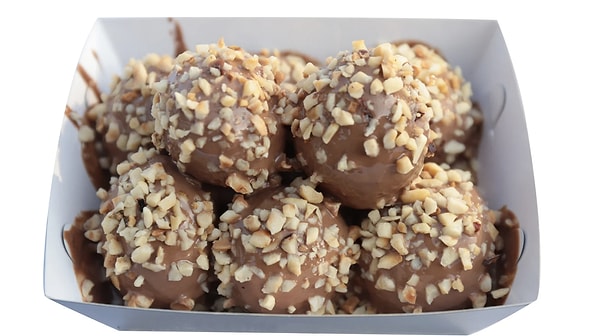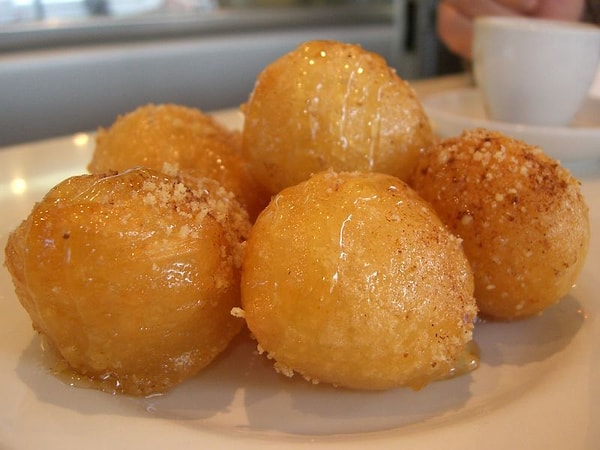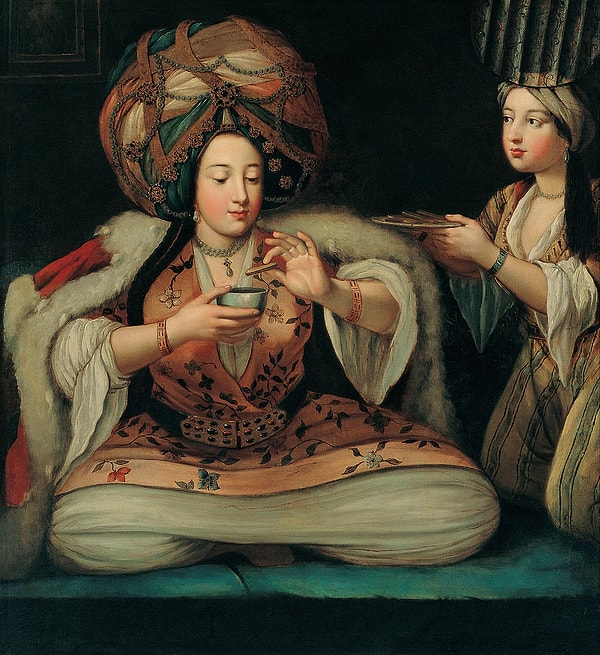Why is Lokma Given Out for Free in Turkey? And How to Make Lokma at Home?
Within the thousands of years of gastronomic heritage of Anatolian lands, some delicacies leave a mark not only on palates but also on hearts. Lokma dessert is one of these special tastes. This unique flavour, which emerges when the dough, which turns golden after being thrown into hot oil, meets syrup, is not only a dessert, but also a cultural heritage, a tradition of sharing and a social memory.
The History of Lokma Dessert

The origins of lokma date back to ancient times. The first traces of it can be found in Ancient Greece. According to Greek mythology, the first-place winners in athletic competitions held in the name of the gods were presented with ‘honey balls.’ These balls were quite similar to today's lokma. In this sense, lokma is considered one of the first sweet treats in world history.
Lokma-like sweets entered the Islamic world during the Abbasid period. Known as ‘Luqmat al-qādi’ (judge's lokma), this sweet spread across the Arabian Peninsula, North Africa, and Anatolia over time. During the Ottoman Empire, it became an important sweet distributed on special occasions, celebrations, and after military victories in the imperial kitchen. From the reign of Suleiman the Magnificent onwards, making lokma, especially in Istanbul, became a tradition with both religious and social significance.
Lokma Dessert Culture: A Sweet Way to Share Pain

Lokma is seen in Turkey not only as a dessert but also as a means of remembrance, prayer and social solidarity. The distribution of lokma is an important tradition throughout the country, especially in the Aegean Region. After a person's death, lokma is distributed free of charge for charitable purposes or on religious holidays. This distribution is usually carried out through mobile lokma carts and takes place in public areas. Making lokma is seen as both a way to do good for the deceased and a way to connect with the community.
However, it should not be assumed that lokma is only distributed at funerals. It is also customary to distribute lokma for a newborn child, after an important achievement, at business openings, or celebrations such as weddings. At times, lokma is even distributed solely to express gratitude.
Modern Lokma and Different Interpretations

In recent years, lokma dessert has begun to be reinterpreted under the influence of modern gastronomy. In addition to the classic syrup-based version, chocolate-filled, pistachio-filled, clotted cream-filled, and even ice cream-filled lokma have become popular. This new generation of lokma, which originated in Izmir, has attracted the attention of both locals and tourists. However, the traditional lokma remains the most preferred version.
The Religious and Social Significance of Lokma Dessert

Lokma carries the meaning of charity in Islamic culture. The understanding that ‘every lokma given is considered charity’ increases the spiritual value of this dessert. Distributing lokma on blessed days such as Regaip Kandili and Mevlid Kandili is preferred both to earn merit and to strengthen the sense of social unity.
Additionally, lokma is a way to connect with the past. Lokma, distributed alongside prayers for departed loved ones, serves as a gift sent to their souls. In this sense, lokma acts as a bridge connecting the past with the present, the individual with society, and religious rituals with daily life.
How to Make Lokma at Home: Traditional Lokma Dessert Recipe

Lokma dessert appears simple but requires attention to its consistency and balance. Here is a traditional lokma recipe you can easily make at home:
Ingredients:
For the dough:
3 cups of flour
2 cups of warm water
1 teaspoon of sugar
1 teaspoon of salt
1 tablespoon of dry yeast
For frying:
Vegetable oil (for deep frying)
For the syrup:
2 cups of granulated sugar
1.5 cups of water
A few drops of lemon juice
Preparation:
1. Prepare the syrup. Combine the sugar and water in a saucepan and bring to a boil. After boiling, add a few drops of lemon juice and continue boiling for about 10 minutes. Leave to cool.
2. Prepare the dough. Add the yeast and sugar to the warm water. Then slowly add the flour and salt. Mix until you get a sticky, runny dough. Cover the dough and leave to rise for about 1 hour.
3. Frying. Heat the oil in a deep pan. Take small pieces of dough and drop them into the oil. Fry until golden brown. You can easily shape the dough using a piping bag or an ice cream scoop.
4. Syrup coating. Remove the fried lokma pieces onto paper towels to drain excess oil, then dip them into cold syrup. Let them sit for 1-2 minutes before serving.
The Place of Lokma in Literature and Art

Lokma has found its place not only in the kitchen but also in the world of literature and art in Turkish folk culture. The word ‘lokma’ is frequently used metaphorically in folk tales, epics, and even classical Ottoman poetry. In Sufi poetry, the phrase ‘love lokma’ (meaning love bite) is used to describe spiritual nourishment. Additionally, lokma sweets are commonly depicted in Ottoman miniatures, particularly in scenes depicting palace banquets.
Lokma Festivals and Their Current Significance

Lokma festivals organised by local communities in some Aegean towns and various regions of Anatolia are important events that keep the social significance of this dessert alive. At these festivals, both traditional methods of making lokma are demonstrated and different interpretations of lokma are exhibited.
Today, social media also plays a major role in the re-popularisation of lokma. Especially the 'pouring of lokma' videos for famous fictional characters shared on Instagram and TikTok have aroused interest in this tradition among the younger generations. The meeting of the traditional with the contemporary has made lokma dessert a timeless cultural value.
Keşfet ile ziyaret ettiğin tüm kategorileri tek akışta gör!

Send Comment